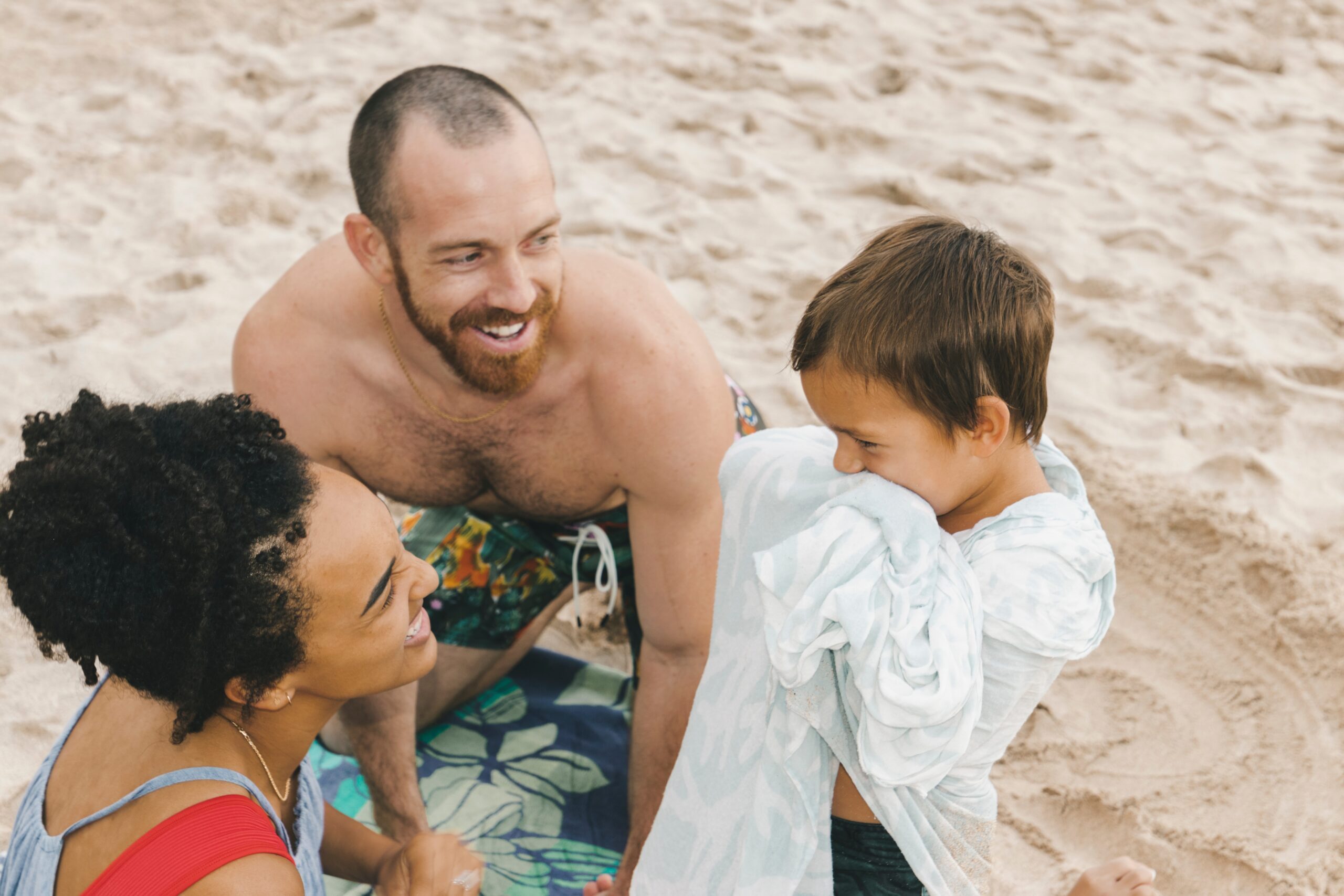With May gray finished and June gloom nearly behind us, we are ready for summer weather in San Diego! While summertime brings countless fun activities, for many children with sensory processing differences, they cringe at the thought of putting on sunscreen or swimming at the beach. Many children with sensory processing differences are hypersensitive to touch, often referred to as tactile sensitivity. Sunscreen is cold, sand is itchy, and saltwater is sticky. These summertime sensations may be only mildly uncomfortable for most people, but for some children with sensory processing needs, these feelings may lead to confusion and discomfort during everyday summer activities. But with some extra support and planning, we can enable children with sensory needs to join in and have fun! Here are some tips to help your child participate in summer fun:
- Movement and deep pressure. Light, ticklish touch while sitting down is often what is most uncomfortable for children. Firm touch (deep pressure), exercise (proprioception) and movement (vestibular input) are the types of sensory input that ‘override’ those uncomfortable tactile sensations in the brain. Before applying sunscreen, give your child a whole-body squeeze inside their beach towel. Have a ‘wiggle break’ in the middle of a sunscreen-applying session. After arriving at the beach, play tag or do some running and jumping. Swinging and spinning in the water may be so much fun that suddenly the splashing is alright.
- Provide choice and control. Show your child two sunscreens, and perhaps they can smell both before choosing between them. Apply sunscreen to the face in front of a mirror so that your child can see what you are doing while you are rubbing it into their face. Rub it in while counting down backwards from 10, stopping for a break at 0 so that your child knows when they will have a break. To minimize sunscreens dripping/running into eyes when swimming, try mineral sunscreens. If your child absolutely cannot stand sunscreen, minimize the amount needed with a long sleeved sun shirt or swim shirt, some longer-length swimming shorts, and a bucket hat. You can even consider going to the beach or a swimming pool during hours of the day with the lowest UV index, like early morning or late afternoon/evening. If your child can’t handle the feeling of water in their eyes, consider having them wear goggles. If your child is sensitive to bright light, bring a beach umbrella, hat and sunglasses. Try water shoes, Velcro sandals or old sneakers if your child does not like being barefoot on the hot sand. By using choice and experimenting with what works best, you enable your unique child to be a sensory problem solver.
- Start small. Even though your child may be eager to go to a water park or theme park, these places are sometimes overwhelming with crowds, lines, and long walks. Not to mention the pressure to have fun after you’ve spent a considerable amount of money on the family’s admission. You may consider taking a trip to a local splash pad or a neighborhood festival to build your child’s comfort before visiting a water park, theme park, or even a busy beach.
- Set expectations. Before visiting a new place, consider showing your child photos you find online of the place to help envision where you’re going and what it may be like. Talk about how long you plan to stay, and what you plan to do after the outing.
- One thing at a time. Apply sunscreen at home or in the parking lot before your child is eager to play. Encourage your child to go at their own pace. At the beach, let your child get comfortable in the sand before suggesting a swim. Perhaps they want to watch their sibling enjoying a ride before trying themself. Don’t pressure your child if they don’t want to try something. For example, if they don’t want to dig in the sand, just give them some time. After they watch you or their sibling build a sandcastle, they may actually join in on their own.
- Expect challenges and plan for them. Keep spare clean towels in the car and bring a favorite toy. Bring ice water or frozen juices and a favorite refreshing snack. Bring an extra-large towel or blanket to sit or lay on. Know where the toilets are located before you need them. After swimming at the beach, your child may immediately want to go home because now the sand is sticking to their wet skin. If you had planned to stay longer, try to help your child work through this experience. For example, go to the beach showers for a quick rinse of the salt water and have a fresh clean towel ready for drying off before trying again. It may help to have a favorite toy to help ease the process.
- If at first, you don’t succeed…keep on trying! Your first summer outing may only last an hour, but by the end of summer you and your family may figure out what type of outing is most enjoyable for all of you.
- End it with some fun! Celebrate a summer outing (even a hard one) by finishing with something your child enjoys and that enables you to connect. Have a family singalong to a favorite song on the way home or go out for ice cream after the trip. Just don’t forget to pack wet wipes for those sticky icky hands!
By Rachel Marshall, OTD, OTR/L
